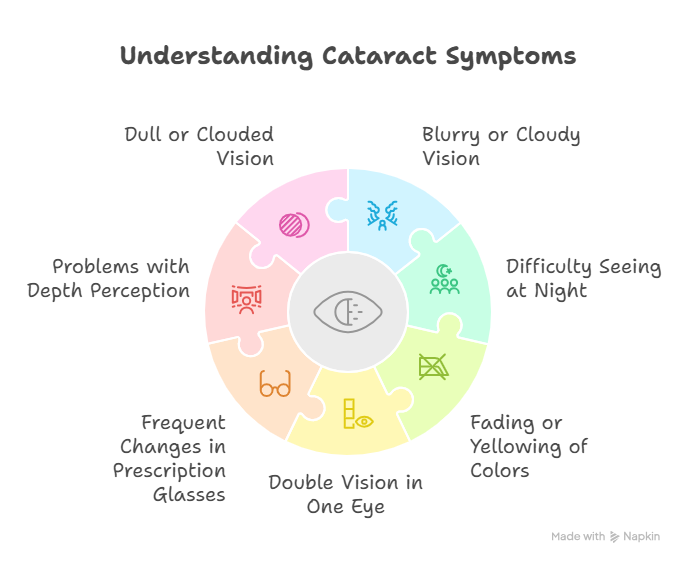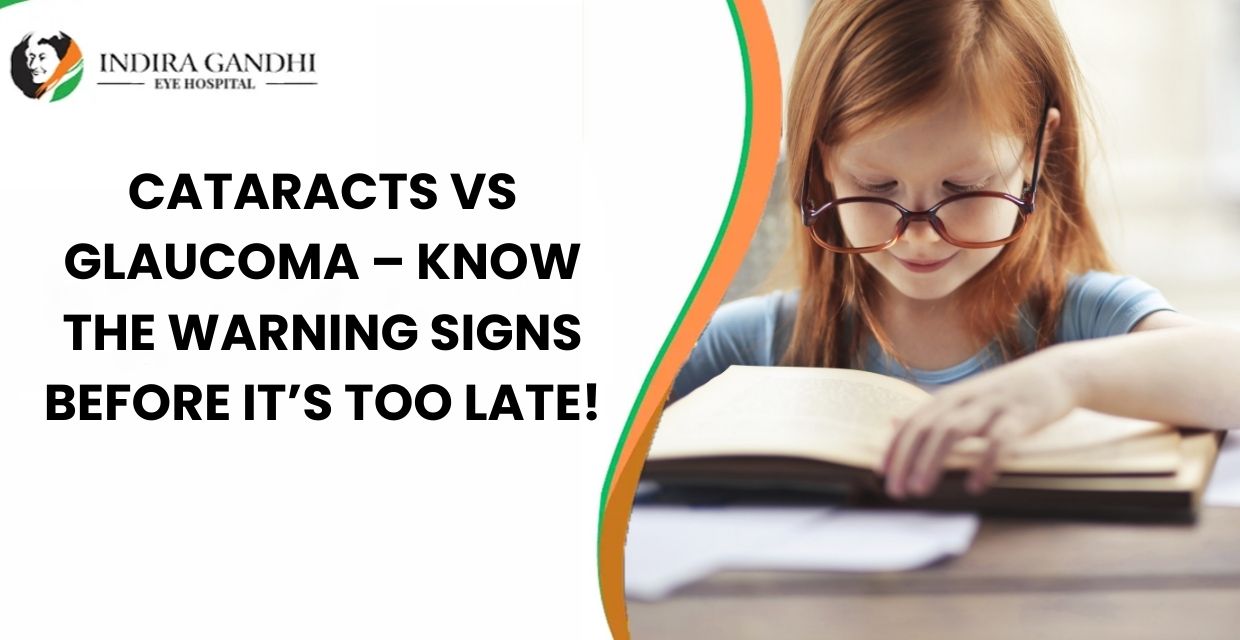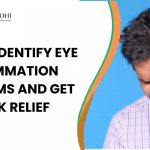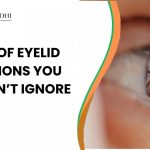|
Getting your Trinity Audio player ready...
|
When it comes to eye health, cataracts and glaucoma are two of the most common conditions that can significantly affect your vision. Both of these eye disorders can lead to vision loss if left untreated. In this blog, we will discuss what are the symptoms of cataracts and glaucoma, the differences between the two, and how you can recognize early warning signs of these conditions. Understanding the symptoms of these eye conditions is crucial for early diagnosis and treatment, which can ultimately preserve your vision and quality of life.
What Are Cataracts?
A cataract is a condition in which the lens of the eye becomes cloudy or opaque, impairing vision. This clouding of the lens prevents light from passing through clearly, leading to blurred or reduced vision. Cataracts typically develop as a result of aging, but they can also be caused by injury, certain medications, or underlying medical conditions such as diabetes.
What Are the Symptoms of Cataracts?

Cataracts progress slowly, and the symptoms can be subtle at first. It’s important to be aware of the early warning signs of cataracts so that you can seek treatment before the condition worsens. Below are the common symptoms of cataracts:
- Blurry or Cloudy Vision: One of the first signs of a cataract is blurry or cloudy vision. Objects may appear fuzzy, and it may be hard to see clearly, even with glasses or contact lenses.
- Difficulty Seeing at Night: Cataracts can cause increased sensitivity to light, making it difficult to see clearly at night. You may notice halos or glare around streetlights, headlights, or other bright lights.
- Fading or Yellowing of Colors: If colors appear faded or yellowed, it could be a sign of a cataract. Cataracts can alter the way colors are perceived, making everything appear less vibrant.
- Double Vision in One Eye: Some people with cataracts experience double vision, which occurs when an image is seen as two distinct images instead of one.
- Frequent Changes in Prescription Glasses: If you find that you need to change your glasses prescription frequently, it may be a sign of developing cataracts. A cataract can change the refractive power of the eye, leading to frequent adjustments in vision correction.
- Problems with Depth Perception: Cataracts can affect your depth perception, making it difficult to judge distances accurately. This can be particularly troublesome when driving or performing activities that require precision.
- Dull or Clouded Vision: Over time, the cataract becomes more opaque, causing vision to become progressively dull and cloudy. This can affect your ability to perform daily activities like reading, cooking, or driving.
What Is Glaucoma?
Glaucoma is a group of eye conditions that damage the optic nerve, often due to high intraocular pressure (pressure inside the eye). The optic nerve is essential for transmitting visual information from the eye to the brain, and when it is damaged, it can lead to irreversible vision loss. There are several types of glaucoma, with the most common being open-angle glaucoma and angle-closure glaucoma.
What Are the Symptoms of Glaucoma?
Glaucoma is often referred to as the “silent thief of sight” because it can develop gradually without noticeable symptoms in the early stages. In fact, many people with glaucoma may not realize they have it until significant vision loss has occurred. However, there are some warning signs to be aware of. Below are the most common symptoms of glaucoma:
- Gradual Loss of Peripheral Vision: One of the most common symptoms of glaucoma is a gradual loss of peripheral (side) vision. It may start with a loss of vision in the outer edges of your field of vision, making it difficult to see objects to the side.
- Blurred Vision: Blurry vision, especially when experiencing a sudden increase in eye pressure, is a symptom of glaucoma. The blurred vision may worsen over time, leading to difficulty seeing clearly.
- Eye Pain or Discomfort: Acute glaucoma, such as angle-closure glaucoma, can cause sudden eye pain, redness, and nausea. If you experience severe eye pain or discomfort along with other symptoms, it may indicate a more serious type of glaucoma that requires immediate medical attention.
- Seeing Halos Around Lights: People with glaucoma often report seeing halos or rainbows around lights, particularly at night. This symptom occurs due to the increased pressure in the eye and the resulting optical distortions.
- Headaches: Persistent headaches can occur with glaucoma, especially in the later stages of the disease. These headaches are often accompanied by eye pain or discomfort.
- Sudden Vision Loss: In the case of acute angle-closure glaucoma, vision loss can occur suddenly. This is a medical emergency and requires immediate treatment to prevent permanent damage to the optic nerve.
- Loss of Central Vision (in Advanced Stages): As glaucoma progresses, central vision can also be affected, leading to significant vision loss. This can make it difficult to read, drive, or perform everyday tasks.
- Redness in the Eye: Eye redness, especially when accompanied by pain, can be a sign of elevated intraocular pressure associated with glaucoma.
- Nausea and Vomiting: In severe cases of acute glaucoma, the increased intraocular pressure can cause nausea and vomiting. These symptoms may be accompanied by blurred vision and eye pain.
How Are Cataracts and Glaucoma Related?
While cataracts and glaucoma are two distinct conditions, they can sometimes occur together, especially in older individuals. Cataracts can cause blurry vision, while glaucoma can cause peripheral vision loss. It is possible for someone with cataracts to develop glaucoma, or vice versa, and both conditions can lead to vision impairment if not managed properly.
It is also worth noting that cataract surgery may affect the progression of glaucoma in some patients. In certain cases, cataract surgery can help reduce intraocular pressure, improving glaucoma symptoms. However, it is essential to monitor both conditions and work with an eye care professional to ensure proper management.
How Are Cataracts and Glaucoma Treated?
The treatment for cataracts and glaucoma depends on the severity of the condition and the type of glaucoma present. Here’s a brief overview of treatment options for both conditions:
Cataract Treatment
- Surgery: The most effective treatment for cataracts is surgery. During cataract surgery, the cloudy lens is removed and replaced with a clear artificial lens (IOL).
- Eye Drops: In the early stages, eye drops may help manage symptoms such as dryness and discomfort caused by the cataract.
Glaucoma Treatment

- Medications: Eye drops are the most common treatment for glaucoma. These medications reduce intraocular pressure and help prevent damage to the optic nerve.
- Laser Surgery: Laser treatments may be used to open blocked drainage channels in the eye, allowing fluid to drain more efficiently and lowering eye pressure.
- Surgery: In advanced cases, surgery may be required to create a new drainage channel to reduce eye pressure.
Recognize the Symptoms of Cataracts & Glaucoma – Book a Consultation with Top Eye Doctors!
Make An AppointmentWhen Should You See a Doctor?
If you are experiencing any of the symptoms of cataracts and glaucoma, it is important to see an eye care professional immediately. Early detection and treatment can prevent further vision loss and improve the quality of life. Regular eye exams are essential for detecting both cataracts and glaucoma, especially if you are at higher risk due to age, family history, or other factors.
Conclusion
In conclusion, what are the symptoms of cataracts and glaucoma is an important question for anyone concerned about their eye health. Both conditions can lead to significant vision loss if left untreated, but early diagnosis and treatment can help prevent or manage these conditions effectively. Regular eye exams and prompt attention to any changes in vision can make a significant difference in maintaining healthy eyes and clear vision.
If you are experiencing symptoms of cataracts and glaucoma, don’t wait. Visit IGEHRC for a comprehensive eye exam and personalized treatment options. Our team of experts is here to help you preserve your vision and ensure that your eyes remain healthy for years to come.












